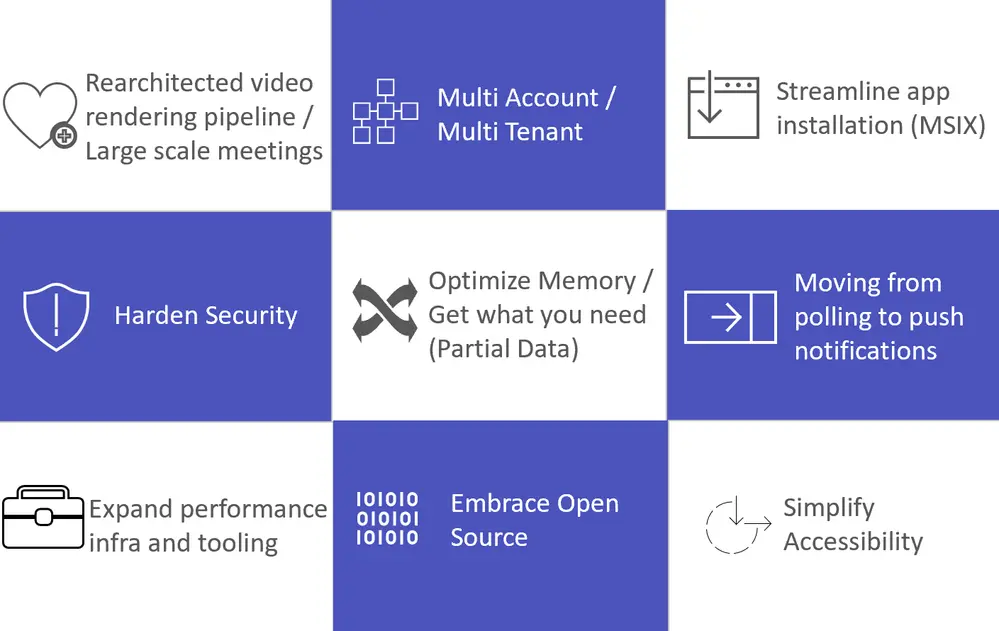Unveiling the Power of Microsoft Teams: A Comprehensive Look at its Features and Use Cases

In today’s digital age, collaboration and communication tools have become indispensable to businesses worldwide. Among these tools, Microsoft Teams has emerged as a frontrunner, transforming the way organizations collaborate, communicate, and streamline their processes. My journey with Microsoft Teams began about two years ago, and since then, it has become an integral part of our daily operations. The platform’s ability to integrate seamlessly with various applications and its range of features designed to enhance productivity have significantly impacted our workflow efficiency. In this comprehensive review, I aim to share insights into the capabilities of Microsoft Teams and how it can revolutionize workplace collaboration.
Microsoft Teams is not just another communication tool; it is a robust platform that combines chat, meetings, notes, and attachments, allowing teams to be more engaged and productive. The application serves as a hub for teamwork, where users can easily find everything they need for their collaboration needs. From my experience, the transition to Microsoft Teams has streamlined our project management tasks, improved our communication, and fostered a culture of openness and teamwork within the organization.
As we delve deeper into the functionalities and use cases of Microsoft Teams, it is essential to understand the core features that set it apart from other tools in the market. The platform’s ability to bring together various aspects of collaboration under one roof has been a game-changer for us, and I am excited to share how it can do the same for your organization.
Table of Contents
Key Features of Microsoft Teams
Microsoft Teams is packed with features designed to support diverse team collaboration needs. One of the most significant advantages of using Teams is its deep integration with Office 365. This integration allows us to access, share, and edit Word documents, Excel spreadsheets, and PowerPoint presentations in real-time, directly within the Teams interface. The seamless nature of this integration has eradicated the need for switching between applications, enhancing our productivity manifold.
Another feature that stands out is the chat function, which supports both one-on-one and group conversations. The chat function is not merely a messaging tool; it is a comprehensive communication solution that supports file sharing, video calls, and the ability to easily switch between text and voice communication. Our team has found this feature particularly useful for quick discussions and decision-making processes, as it eliminates the delays associated with email communication.
Teams also excel in facilitating virtual meetings. With features such as scheduling assistance, meeting note-taking, screen sharing, and real-time file collaboration, Teams meetings have become more than just video calls. They are collaborative sessions where ideas are born and decisions are made. The ability to record meetings and automatically transcribe them has been invaluable for team members who cannot attend in real-time, ensuring no one misses out on important discussions.
Collaboration and Communication with Microsoft Teams
The essence of Microsoft Teams lies in its ability to foster collaboration and communication among team members, regardless of their physical location. In our organization, Teams has bridged the gap between remote and in-office employees, creating a unified workspace where everyone can contribute equally. The platform’s file storage and sharing capabilities, powered by SharePoint and OneDrive, have made document management a breeze. We can now co-author documents, provide feedback through comments, and track version history all in one place.
The integration of Teams with Outlook for email and calendar functionalities further enhances its communication capabilities. We can easily schedule meetings from within Teams or Outlook, and the integration ensures that these appointments are synced across both platforms. This feature has eliminated the confusion and double bookings that were once common in our scheduling process.
Moreover, the ability to create customized channels within Teams has streamlined our project management efforts. Each project or department can have its dedicated channel, where all relevant files, conversations, and meetings are stored. This organization method has significantly improved our project tracking and team collaboration, making it easier for everyone to stay on the same page.
Use Cases for Microsoft Teams in the Workplace
Microsoft Teams has a wide range of applications in the workplace, catering to various industries and team sizes. In our organization, we have leveraged Teams for several purposes, from project management and customer service to human resources and internal communications. The platform’s versatility has allowed us to customize it according to our specific needs, making it an invaluable tool across different departments.

For project management, the integration of Teams with Planner and Microsoft Project has provided us with a comprehensive solution for tracking tasks, assigning responsibilities, and monitoring progress. The visibility into project status has facilitated better decision-making and prioritization, ensuring timely completion of projects.
In the realm of customer service, Teams has enabled us to create a collaborative environment where representatives can quickly access information, seek advice from colleagues, and resolve customer queries efficiently. The ability to integrate third-party applications, such as CRM systems, into Teams has further enhanced our customer service capabilities, providing a 360-degree view of customer interactions.
Integrations and Extensions for Microsoft Teams
The true power of Microsoft Teams lies in its ability to integrate with a wide array of applications and services. This extensibility transforms Teams into a central hub for productivity, where users can access the tools they need without leaving the platform. Our organization has benefited greatly from integrating Teams with applications such as Asana for project management, Trello for task tracking, and Adobe Creative Cloud for design collaboration.

These integrations have not only streamlined our workflows but also created a more cohesive user experience. We no longer need to switch between different applications to complete our tasks, as most of our essential tools are now accessible directly within Teams. Additionally, the Teams App Store offers a plethora of extensions and bots that can automate routine tasks, further enhancing our productivity.
For developers and IT professionals, Teams provides robust APIs and extensibility points, allowing for the development of custom integrations and applications. This capability has enabled our IT team to create tailored solutions that address our unique business needs, further extending the functionality of Teams within our organization.
Security and Privacy in Microsoft Teams
In an era where data breaches and cybersecurity threats are rampant, the security and privacy features of Microsoft Teams have provided us with peace of mind. Teams is built on the secure foundation of Office 365, which employs advanced security measures such as two-factor authentication, end-to-end encryption, and compliance with global standards including GDPR, HIPAA, and ISO 27001.
Our organization takes data privacy and security seriously, and the comprehensive controls offered by Teams have allowed us to manage access, enforce policies, and safeguard our information effectively. The ability to set permissions at the team and channel level ensures that sensitive information is only accessible to authorized personnel, reducing the risk of data leaks.
Furthermore, Teams continuously monitors for suspicious activities and potential threats, providing real-time alerts to administrators. This proactive approach to security has been instrumental in maintaining the integrity of our data and protecting our digital workspace from external threats.
Tips and Best Practices for Using Microsoft Teams
Adopting Microsoft Teams as a central communication and collaboration platform requires a strategic approach to ensure its effective use. Over the course of our journey with Teams, we have identified several tips and best practices that have maximized our productivity and streamlined our workflows. First and foremost, it is crucial to provide comprehensive training to all users, covering the platform’s features, functionalities, and best practices for collaboration. This training ensures that team members are well-equipped to leverage Teams to its full potential.
Establishing clear guidelines for communication and collaboration within Teams is also essential. This includes defining when to use chat versus channels, how to organize files and documents, and setting expectations for meeting etiquette. These guidelines help maintain order and efficiency within the digital workspace, preventing common issues such as information overload and miscommunication.
Moreover, taking advantage of the customization and automation features of Teams can significantly enhance its utility. Customizing channels, integrating relevant applications, and automating routine tasks with bots can tailor the platform to fit the unique needs of your team, making everyday processes more efficient.
Training and Resources for Microsoft Teams
To fully harness the power of Microsoft Teams, accessing the right training and resources is key. Microsoft offers a wealth of information, including online tutorials, webinars, and documentation, to help users get started and advance their knowledge of Teams. Our team has found these resources incredibly valuable, especially when exploring new features or troubleshooting issues.
Additionally, there are numerous third-party training programs and community forums where users can share tips, ask questions, and learn from the experiences of others. Engaging with these communities has not only expanded our understanding of Teams but also provided us with innovative ideas for using the platform in ways we hadn’t previously considered.
For organizations looking to roll out Teams or enhance their usage, leveraging these training and resources is a critical step. Continuous learning and adaptation are essential, as Teams is constantly evolving with new features and capabilities that can further improve collaboration and productivity.
Case Studies: How Companies are Leveraging Microsoft Teams
Throughout the business world, companies of all sizes are leveraging Microsoft Teams to transform their operations and drive success. One notable example is a multinational corporation that utilized Teams to facilitate its global project management efforts. By creating dedicated channels for each project and integrating project management tools, the company was able to enhance team collaboration, streamline communication, and deliver projects more efficiently.

Another example is a small business that adopted Teams to support its remote workforce. Through the use of Teams meetings, chat, and file sharing capabilities, the business was able to maintain a high level of productivity and engagement among its remote employees, fostering a sense of community and collaboration despite the physical distance.
These case studies illustrate the versatility and impact of Microsoft Teams across different industries and organizational sizes. By leveraging the platform’s comprehensive features and integrations, companies can achieve improved collaboration, communication, and productivity, ultimately driving business success.
What can users expect from Microsoft Teams in a comprehensive review of its features and use cases?
In this comprehensive look at Microsoft Teams, users can expect to gain a deep understanding of the platform’s extensive features and how they can be leveraged to enhance collaboration and productivity within the workplace. From its seamless integration with Office 365 and robust communication tools to its advanced security measures and vast ecosystem of integrations and extensions, Teams is equipped to meet the diverse needs of today’s businesses.
Furthermore, the exploration of real-world use cases and best practices provides valuable insights into how organizations can effectively implement and maximize the benefits of Teams. Whether you are just beginning your journey with Microsoft Teams or looking to optimize its use, this review offers a wealth of knowledge and guidance to help you unlock the full potential of this powerful collaboration platform.
Conclusion: Harnessing the Power of Microsoft Teams
As we conclude this comprehensive look at Microsoft Teams, it’s clear that the platform offers a powerful suite of features designed to enhance collaboration and productivity in the modern workplace. From seamless communication and file sharing to robust security measures and extensive integrations, Teams provides everything organizations need to create a dynamic and efficient digital workspace.
Adopting Microsoft Teams has transformed the way our organization operates, breaking down barriers to collaboration and enabling us to work more effectively than ever before. With the right approach and utilization of the platform’s capabilities, Teams can drive meaningful improvements in workflow, project management, and overall organizational efficiency.
As you embark on or continue your journey with Microsoft Teams, I encourage you to explore the full range of features and functionalities discussed in this review. By harnessing the power of Microsoft Teams, you can unlock new levels of productivity and collaboration, propelling your organization towards greater success in the digital age.







